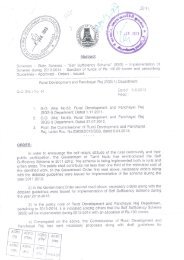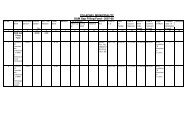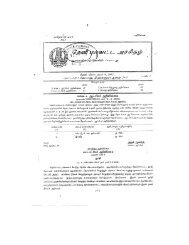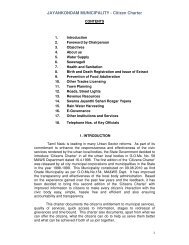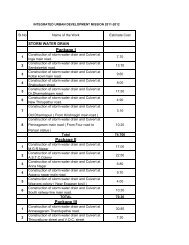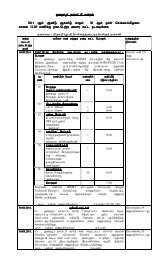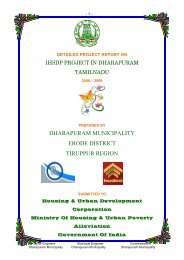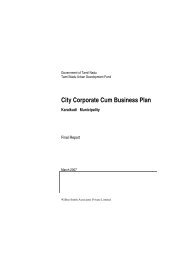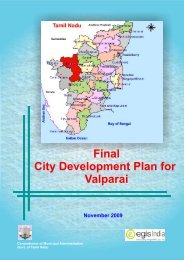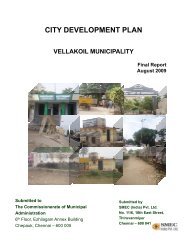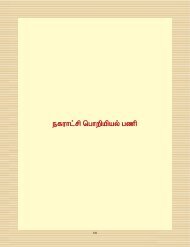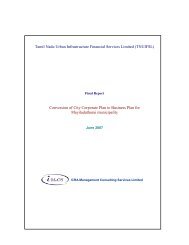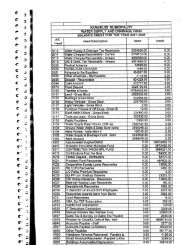Gudiyattam Gudiyattam Town - Municipal
Gudiyattam Gudiyattam Town - Municipal
Gudiyattam Gudiyattam Town - Municipal
You also want an ePaper? Increase the reach of your titles
YUMPU automatically turns print PDFs into web optimized ePapers that Google loves.
Chapter ñ12 Final Report: <strong>Gudiyattam</strong> <strong>Municipal</strong>ity<br />
Infrastructural projects:<br />
Water supply project<br />
1. As regards water supply projects, the consultant proposes using available<br />
UGSS project<br />
local sources (surface water) in lieu of capital intensive projects from far off<br />
sources. The enforcement of RWH in all buildings is a commendable initiative,<br />
which has proven successful in improving the quality and quantity of ground<br />
water table according to a recent study. Rejuvenation and protection of<br />
water bodies and recycling, reuse of water is also a major issue to be<br />
addressed in this regard. Participation of SHGS, voluntary organizations,<br />
resident welfare associations need to be sought.<br />
1. Highly engineered and mechanized conventional sewage treatments require<br />
large Capital Investments, demand high maintenance costs and are not<br />
feasible for the developing countries like ours. Capital intensive and highly<br />
technological waste disposal solutions, utilizing indiscriminate collection and<br />
large-scale disposal, do not consider the value of recovering organic waste<br />
resources and do not promote recycling. The land required for the disposal of<br />
treated wastewater in the conventional treatment systems is not readily<br />
available. Alternative treatment systems like Root zone treatment methods<br />
could be used.<br />
2. GoTN may also encourage recycle of water, to meet requisite standards<br />
rather than let them out into streams or sewage farms. This will not only<br />
promote water recycling , but also resource recovery of minerals.<br />
Integrated Water Resources Management Plan (IWRM) ñ The solution.<br />
As a general rule, in the past with smaller populations, less intense economic<br />
activity and with less affluent societies demanding much less water, supply of the<br />
resource was usually much greater than demand for it. In such circumstances<br />
water for agriculture, for industry, for domestic and all other uses could be<br />
managed separately there being sufficient water to accommodate all needs<br />
and there being little competition between uses and between users.<br />
As populations have grown, as food production has increased, as economic<br />
activity has developed and as societies have become more affluent, so<br />
demand for water has burgeoned. The traditional fragmented or purely sectoral<br />
approach is no longer viable and a more holistic approach is essential. This is the<br />
rationale for the Integrated Water Resources Management (IWRM) approach<br />
that has now been accepted internationally as the way forward for efficient and<br />
sustainable development and management of the worldís limited water<br />
resources and for coping with conflicting demands.<br />
- 114 -<br />
Voyants Solutions Private Limited



